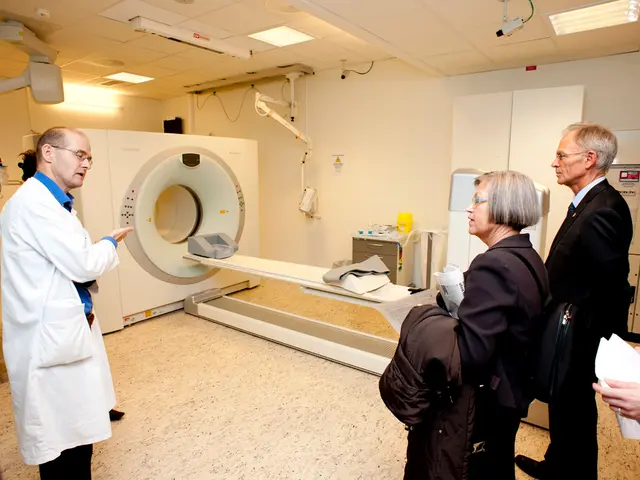Uterine cancer survival, exploration, and insights
Uterine cancer, also known as endometrial cancer, is a type of cancer that affects the lining of the uterus. The outlook for uterine cancer is generally positive, especially when it's detected early.
Survival rates for uterine cancer are grouped into three categories: localized, regional, and distant.
- Localized uterine cancer (cancer confined to the uterus) has a promising prognosis. The 1-year relative survival rate is 99.0%, the 5-year relative survival rate is 94.9%, and the 10-year relative survival rate is 92.9%. This means that over 90% of people with localized uterine cancer are still alive 5 years after diagnosis.
- Regional uterine cancer (spread to the cervix or outside the uterus but within the pelvis) has a slightly lower survival rate compared to localized cancer. The 1-year relative survival rate is 90.6%, the 5-year relative survival rate is 68.8%, and the 10-year relative survival rate is 61.5%.
- Distant uterine cancer (spread to other parts of the body) has the lowest survival rate. The 1-year relative survival rate is 50.9%, the 5-year relative survival rate is 17.8%, and the 10-year relative survival rate is 13.4%.
It's important to note that these survival rates do not guarantee a specific period of life for people with uterine cancer. They provide an estimate based on large groups of people, and individual outcomes can vary greatly.
There are two main types of uterine cancer: endometrial cancer and uterine sarcoma. Endometrial cancers are more common and usually grow slowly. Type 1 endometrial cancers are not particularly aggressive and do not spread quickly. They are often linked to excess estrogen in the body. On the other hand, Type 2 endometrial cancers are more likely to grow and spread quickly to other tissues. They do not seem to be caused by excess estrogen.
Uterine sarcomas, a rare and heterogeneous group of cancers distinct from typical endometrial carcinomas, present a more challenging prognosis with lower survival rates. Specific data for uterine sarcoma subtypes were not detailed in the results.
The Surveillance, Epidemiology, and End Results (SEER) database tracks survival rates for uterine cancer in the U.S.
Advanced or recurrent endometrial cancer (stage III/IV) often has a 5-year survival rate below 20%, reflecting aggressive disease behavior. Treatments such as chemotherapy can extend overall survival to about 1–2 years in advanced cases but do not usually cure advanced disease. Prognostic factors influencing survival include tumor grade, lymphovascular invasion, patient's age, and molecular features in personalized medicine approaches.
For those affected by uterine cancer, support is available. The Cancer Survivors Network, supported by the American Cancer Society, is a community for people with cancer, caregivers, and family to connect with others going through similar experiences.
In conclusion, early detection of uterine cancer significantly improves the chances of survival. While the outlook for advanced stages can be challenging, ongoing research and advancements in treatments provide hope for continued improvements in outcomes.
- Science and advancements in medical-conditions like ovarian cancer, specifically uterine cancer, have led to more effective treatment methods, as evidenced by the promising prognosis for localized uterine cancer.
- Mental-health support and resources, such as the Cancer Survivors Network, are crucial for women dealing with ovarian cancer, as the journey to health-and-wellness can be challenging, especially for those diagnosed with advanced or recurrent uterine cancer.
- Women's health encompasses a variety of medical-conditions, including ovarian cancer, and understanding the different types of uterine cancer, like endometrial and uterine sarcoma, and their respective survival rates, is essential for early detection and improved treatment outcomes.




